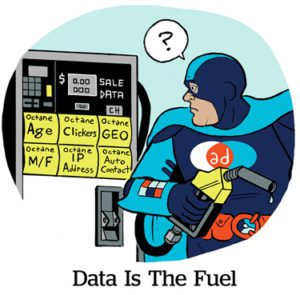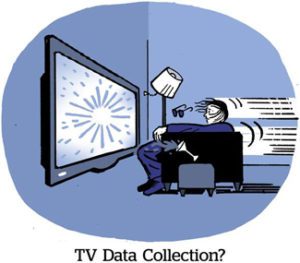“On TV & Video” is a column exploring opportunities and challenges in advanced TV and video.
Despite transparency woes, programmatic buying on CTV is evolving.
M&A is helping spur maturation in the market.
Tremor International, for example, acquired digital ad platform Amobee from Singtel over the summer to boost its programmatic ad tech stack with better self-service tools and access to more omnichannel inventory, including on linear TV.
Tremor is a “much different business” now that it has integrated Amobee’s tech into its stack, said Chance Johnson, the company’s new chief commercial officer. (Johnson joined Tremor International in September after a stint as CRO of Integral Ad Science. Before that, he served as SVP of sales at Amobee between 2018 and 2019.)
Now, Tremor is focused on getting more data to plug into its new tech. Shortly before the acquisition of Amobee, Tremor announced a partnership with Hisense for exclusive access to automatic content recognition (ACR) data through the TV manufacturer’s VIDAA operating system.
But Tremor is far from the only video vendor gunning for ACR data.
Bolstering programmatic buys with better viewership data will help advertisers access more premium TV supply, Johnson said.
Johnson spoke with AdExchanger.
How has consolidation changed Tremor’s business model?
Consolidation simplifies the media-buying process.
Tremor had a lot of success with the Unruly SSP acquisition, and Amobee’s technology added to the media planning component.
Advertisers buying with Tremor can run a plan against their audiences, create deal IDs within Unruly and then use the Amobee DSP to buy those deal IDs. Consolidating all of that technology in one tech stack gives advertisers more flexibility with performance and budget.
Didn’t Tremor already have a DSP?
Amobee will be Tremor International’s primary DSP. We’re working through the integration. We certainly only need one DSP. Otherwise, business gets very confusing.
The Amobee technology is superior in certain ways, so the focus now is to integrate the best components of Tremor Video into Amobee, then connect Amobee directly to Unruly.
What about Amobee is better than Tremor Video?
Amobee’s reporting and self-service functionalities make it a little easier for advertisers to manage multiple campaigns.
Are there parts of Tremor Video that you’ll keep?
The ease of delivering and optimizing video campaigns.
Tremor was built to be efficient and video-centric, and the platform is easy to use. Advertisers years ago didn’t have to go through so many bells and whistles to get a campaign live and optimized with Tremor Video like they did with other DSPs.
What are the next steps for Tremor International?
The plan is to help advertisers allocate budgets across streaming and linear TV.
We’ve just completed a new tool that calculates recommendations for spend allocations between streaming and linear based on advertisers’ budgets and audiences. The idea is to make cross-channel buying more frictionless through Unruly by plugging the tool directly into our supply. We have some clients using it in beta now.
Why do advertisers struggle to allocate budgets between streaming and linear?
A lot of broadcasters have no problem selling their digital environments, but they’re struggling to sell linear inventory. Certain buyers actually end up having to attach their linear investments to their digital buys in the upfronts. Advertisers then struggle to figure out how much spend they should be allocating across CTV versus data-driven linear in terms of ROI.
Are advertisers activating data-driven linear campaigns with Amobee?
Data-driven linear (DDL) is not very programmatic. For the most part, DDL deals are done through direct commitments between buyers and sellers.
The linear component of our new tool is essentially just planning. Buyers can plug their digital plans directly into Unruly supply, buy that supply through Amobee and activate their campaigns immediately.
On the linear side, we provide the planning so advertisers can then strike deals directly with broadcasters based on those plans.
Does ACR factor into campaign planning?
ACR data certainly informs the planning component, but it also helps advertisers get more specific with their buys.
The partnership we now have with Hisense’s VIDAA gives us access to the operating system’s ACR data. That’s powerful because we can take that smart TV inventory supported by VIDAA and bring it into a programmatic ecosystem. The integration allows us to curate targeting and better identify where specific audiences are spending their viewing time.
One of the biggest challenges for advertisers today is working with big streaming media partners that have created their own walled gardens. Their data never leaves their ecosystems. And that makes it really challenging for advertisers to measure frequency against their audiences across networks and channels.
Is this lack of transparency why many CTV buyers favor programmatic guaranteed deals?
Programmatic guaranteed (PG) is getting bigger every day – which makes sense. With PG, advertisers can consolidate reporting and optimization in place of managing multiple insertion orders with different broadcasters and publishers.
What we’re trying to do is help our advertisers use informed data to buy against their audiences in trusted environments where they see fit. But TV media companies have an incredible challenge on their hands: They want to drive better ad performance but, at the same time, they don’t want to give away their data.
Still, the better performance publishers can drive in programmatic environments, the more advertisers will be willing to pay for it.
This interview has been edited and condensed.



















